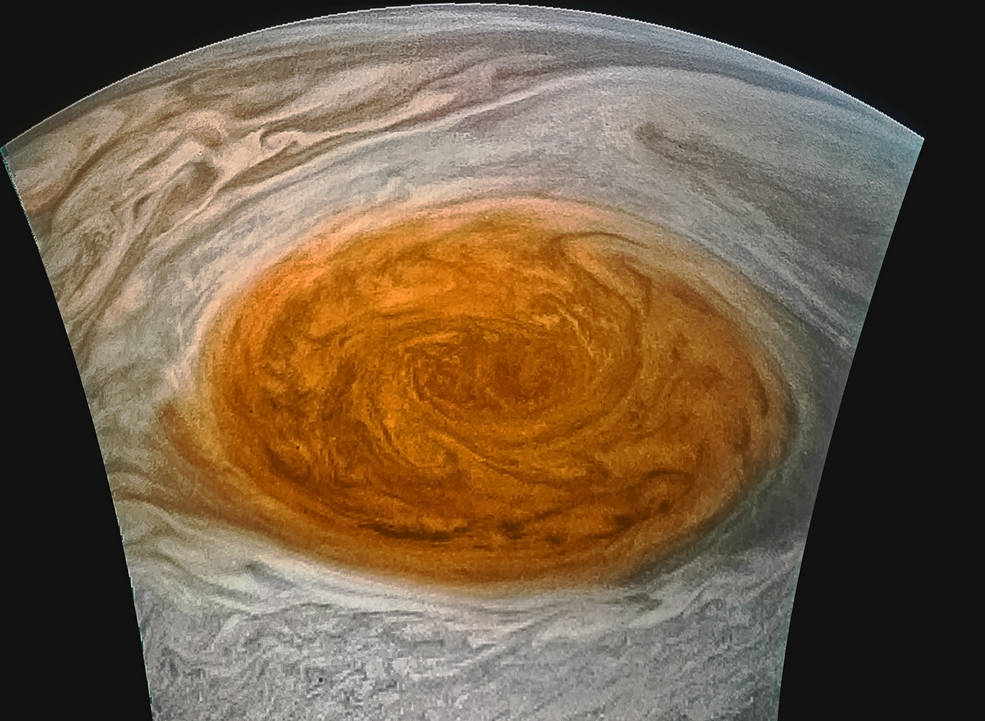The spacecraft Juno has come through, beaming back the first ever clear, close-up images of Jupiter’s Great Red Spot.
Citizen scientists have been at work, piecing together data that the JunoCam imager sent back from its July 10 flyby. The results show wild swirls of dark clouds weaving in and out of a gigantic crimson oval. The raw images of the red spot were downlinked from the spacecraft’s memory on Tuesday, and were uploaded to the Juno Mission website on Wednesday morning, NASA reports.
Scott Bolton, the mission’s principal investigator from the Southwest Research Institute in San Antonio, said,
For hundreds of years scientists have been observing, wondering and theorizing about Jupiter’s Great Red Spot.
He added, “Now we have the best pictures ever of this iconic storm. It will take us some time to analyze all the data from not only JunoCam, but Juno’s eight science instruments, to shed some new light on the past, present and future of the Great Red Spot.”
The raw images have been processed and enhanced by citizen scientists around the world, providing the public with incredibly detailed, full-color images compared to the raw files
Jupiter’s Great Red Spot is its most distinctive feature, currently measuring 10,159 miles (16,350 kilometers) in width, making it 1.3 times as wide as the Earth. The red spot has been a constant curiosity since its discovery in 1830, with scientists saying it could be older than 350 years.
Juno reached perijove – the point in the orbit closes to Jupiter’s center – on July 10, at 6:55 p.m. PDT. The spacecraft was 2,200 miles (3,500 kilometers) above the cloud tops, and in 11 minutes, passed directly over the roiling cloud tops of the Great Red Spot.
Jim Green, NASA’s director of planetary science, said, “These highly-anticipated images of Jupiter’s Great Red Spot are the ‘perfect storm’ of art and science. With data from Voyager, Galileo, New Horizons, Hubble and now Juno, we have a better understanding of the composition and evolution of this iconic feature. We are pleased to share the beauty and excitement of space science with everyone.”
























